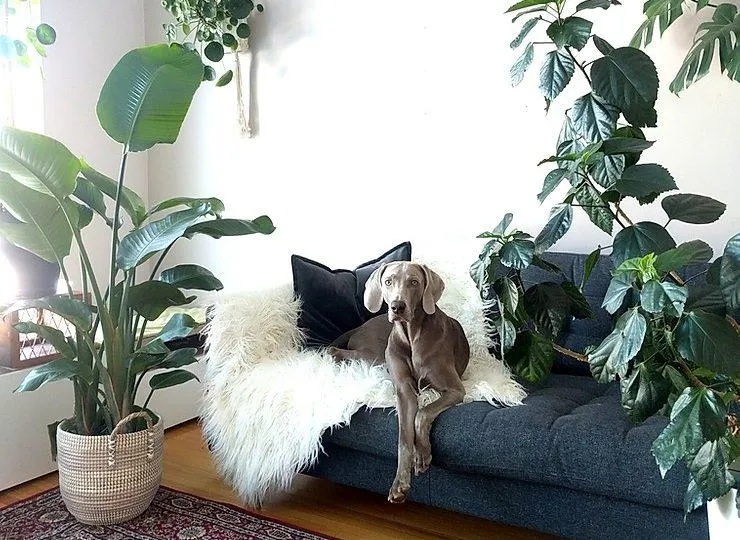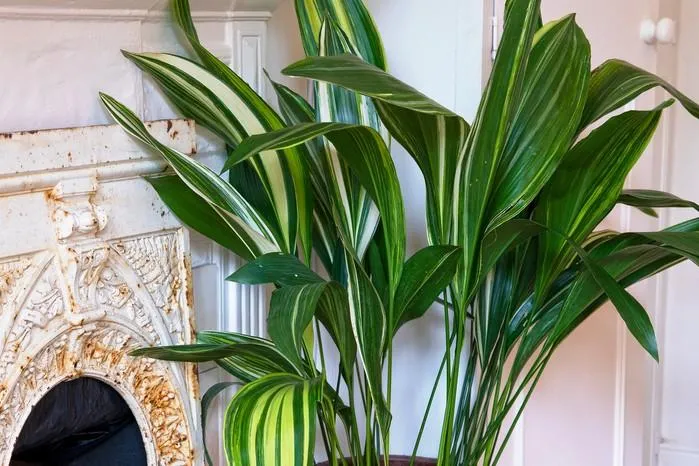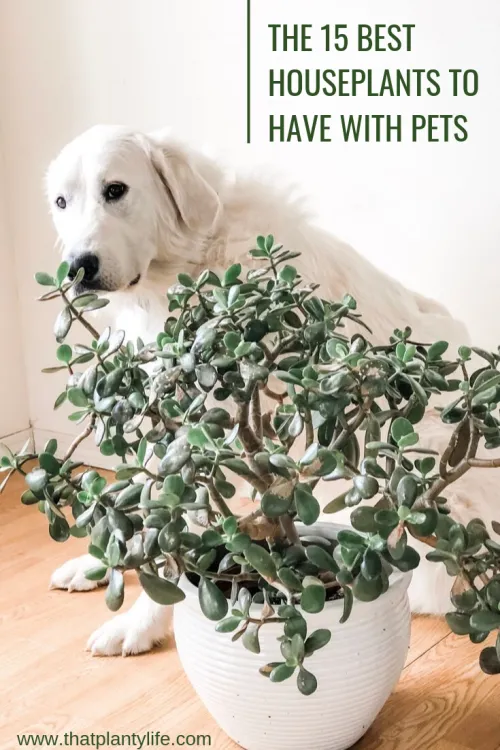The Best Indoor Plants for Fur Babies
If you love greenery but also have fluffy companions roaming your home, finding houseplants that are safe for cats and dogs can seem challenging. From my experience as an avid gardener and pet parent, with a bit of research you can definitely plantify your space without risking your pets’ safety. In this guide, I’ll reveal several top plant picks that are non-toxic as well as some common misconceptions about pet-friendly plants.
Spider Plants
A classic choice that’s basically foolproof with pets is the spider plant. As the name suggests, this plant has long, grass-like leaves with miniature plantlets that resemble spiders hanging off the stalks. Spider plants are amongst the toughest and most tolerant indoor plants around. They thrive in low to medium light and seem to withstand neglect like no other. Plus, their trailing nature makes them virtually impossible for pets to consume. Spider plants are completely cat and dog safe according to the ASPCA poison control database. I have a mischievous tabby and haven’t had any issues with her around my collection of spider plants.
Snake Plants
Another plant renowned for being pet-friendly is the snake plant. This plant goes by many names including mother-in-law’s tongue due to its long, blade-like leaves. Snake plants are actually quite toxic to canines and felines due to the presence of calcium oxalate crystals in their tissues. However, the stiff, waxy leaves make them pretty much impossible to digest. In over 10 years of owning both dogs and snake plants, I’ve never had any close calls or emergencies from my pets. As long as your fur baby isn’t aggressively chomping on leaves, snake plants should pose virtually no risk.
Peace Lilies
For a classic houseplant with a bit of flair, peace lilies are an excellent choice. These plants are known for their broad, shiny leaves and clusters of tiny white flowers. Their common name comes from the belief that they have a calming influence! Perhaps thanks to their bland taste, peace lilies are considered non-toxic to cats and dogs. I have one in my home office that my Shih Tzu likes to nap under without any issues. They tolerate low light and will signal thirst by drooping leaves, which perk back up after watering.

English Ivy
If you’re looking to liven up dim corners, English ivy is a superb climber that also plays nice with pets. This woody-stemmed vine climbs using small aerial roots and stays compactly contained to walls or structures. While dense foliage could theoretically pose an ingestion risk for cats, dogs and ferrets are actually considered tolerant of English ivy. I’ve seen my Boston terrier play fetch with ivy vines without any harmful consequences. Plus, from experience with cats over the years, they don’t seem inclined to chew on ivy.
Chinese Evergreens
Chinese evergreens (also called Aglaonema) are kind of the unsung heroes of low-light houseplants. They thrive in very dim indoor conditions where other plants struggle. Plus, their lush, decorative leaves come in a range of colors from deep green to cream and burgundy. Chinese evergreens contain small amounts of insoluble calcium oxalate crystals, yet they are not noted as more than mildly irritating if ingested by pets. Between its space-stretching size and the waxy coatings on leaves, this pretty plant seems quite dog and cat safe according to vets.
Ponytail Palms
For something more sculptural, ponytail palms deserve consideration. These palm-like plants have thick, stubby trunks and distinctively fuzzy, rope-like leaves bursting from the top. Their namesake refers to the silvery plumes that resemble little ponytails! Ponytail palms are categorized as non-toxic for cats and dogs by the ASPCA. Many of their succulent-like features help deter consumption. And I find my labradoodle shows zero interest in these unique plants.
ZZ Plant
Last but not least, ZZ plants are basically indestructible and ideal for forgetful plant parents like myself. Their narrow, green or variegated leaves grow in dense zig-zag patterns off woody stalks. ZZ plants tolerate sparse watering on the dry side and need minimal light. While they contain small raphide crystals that can theoretically cause minor irritation, vets have not observed serious toxicity issues with dogs or cats when ingested in small amounts. I’ve had one thriving in a rarely-watered corner for years with my pets treating it as just another fixture.

So in summary, those are some of the very best low-maintenance, highly pet-safe houseplant options for homes with furry friends. Hopefully this guide revealed that you definitely don’t need to banish greenery if you share your digs with cats or dogs. Just do your diligence researching individual plant toxicity and be aware that determined pets may get into anything given the chance. But with supervision and smart plant choices, you can totally plantify your pet-owned space without risks to woofers or meowers.
It’s also worth mentioning a few plant caution stories from practical experience. Pothos and dracaena, while lovely as desk plants, do contain irritants and should be kept out of reach. Lilies, which may cause kidney damage in cats, should obviously be banned. And herbs like lavender are generally fine for grazing dogs but problematic if cats devour larger quantities. The key is learning individual plant risks rather than assuming all “houseplants” are automatically pet-friendly.
Final Thoughts
In conclusion, bascially through a bit of diligence you can totally incorporate leafy green life into pet-owned homes. Just avoid obviously toxic blooms or lush calorie-dense fare canines and felines can binge on. Most pets are smart enough to reject difficult, unappealing textures. And supervision helps deter accidents. So go ahead and get planting without fearing for Fluffy or Fido! With the right picks, houseplants can improve air quality and aesthetics without compromising safety. Happy gardening and pet parenting!
Plants Safe for Cats and Dogs

| Plant | Safety Level | Details |
|---|---|---|
| English Ivy | Safe | Non-toxic and pet-friendly. Provide shade and humidity. |
| Succulents | Safe | Low maintenance and slow growing. Variety of shapes and colors. |
| Peace Lily | Safe | Air-purifying and toxic only if large amounts are ingested.Keep pets away from new growth. |
| Spider Plant | Safe | Pet-friendly and produce small plantlets on long stems. Help remove indoor toxins. |
| Pothos | Safe | Tolerant of low-light and require minimal care. Non-toxic if ingested. |
FAQ
-
Can I have plants that are not toxic to cats or dogs in my home?
Yes, there are certain houseplants that are safe for pets. Some common non-toxic plant options are English Ivy, Peace Lily, Spider Plant, Pothos or Devil’s Ivy. At the same time, it’s better to keep potentially unsafe plants out of your pet’s reach.
-
How do I know if a plant is poisonous to pets?
You can check online lists of toxic and non-toxic plants. However, appearances can be deceiving! Some plants that seem harmless, like Philodendron, can actually cause issues if eaten. A safe bet is to look up any plant you’re not 100% sure of. On the other hand, if Fido sticks his nose where it doesn’t belong, it never hurts to give your vet a call for guidance.
-
What kinds of problems can toxic plants cause?
Toxic plants can result in mild to severe symptoms depending on the type of plant and amount eaten. Common issues include vomiting, diarrhea, abdominal pain, drooling, and loss of coordination. In serious cases, certain plants may damage red blood cells or kidneys. So it’s basically best not to chance it and simply keep questionable plants out of paws’ reach.
-
Is there a natural deterrent I can use?
You may try citrus or other scented sprays or potpourri around plants as a deterrent. Some folks have reported success with this method. However, there are no guarantees – some curious critters just can’t resist a good chew! Perhaps ask your vet if they have safer product recommendations to discourage plant nibbling.

-
How can I make my home safe and pet-friendly?
Aside from plant selection, also consider using tall poles or shelves out of jumping range. You may need to pet-proof several areas depending on your pet pal’s abilities. Remove any faded botanical paraphernalia that could be mistaken for plants. And remember – no plant is worth an animal’s health. So if in doubt, just opt for the plastic pretenders!
-
What are some other natural safe options besides plants?
Besides non-toxic houseplants, you can try a pet-approved alternative like a fish tank. The tranquil motions of fish tend to amuse pets and people alike. Consider betta or guppy fish that require simple care. Just take precautions with filtration or heating equipment. Vegetable or herb window gardens mounted out of reach also add charm. So get creative while keeping Fido in mind!
